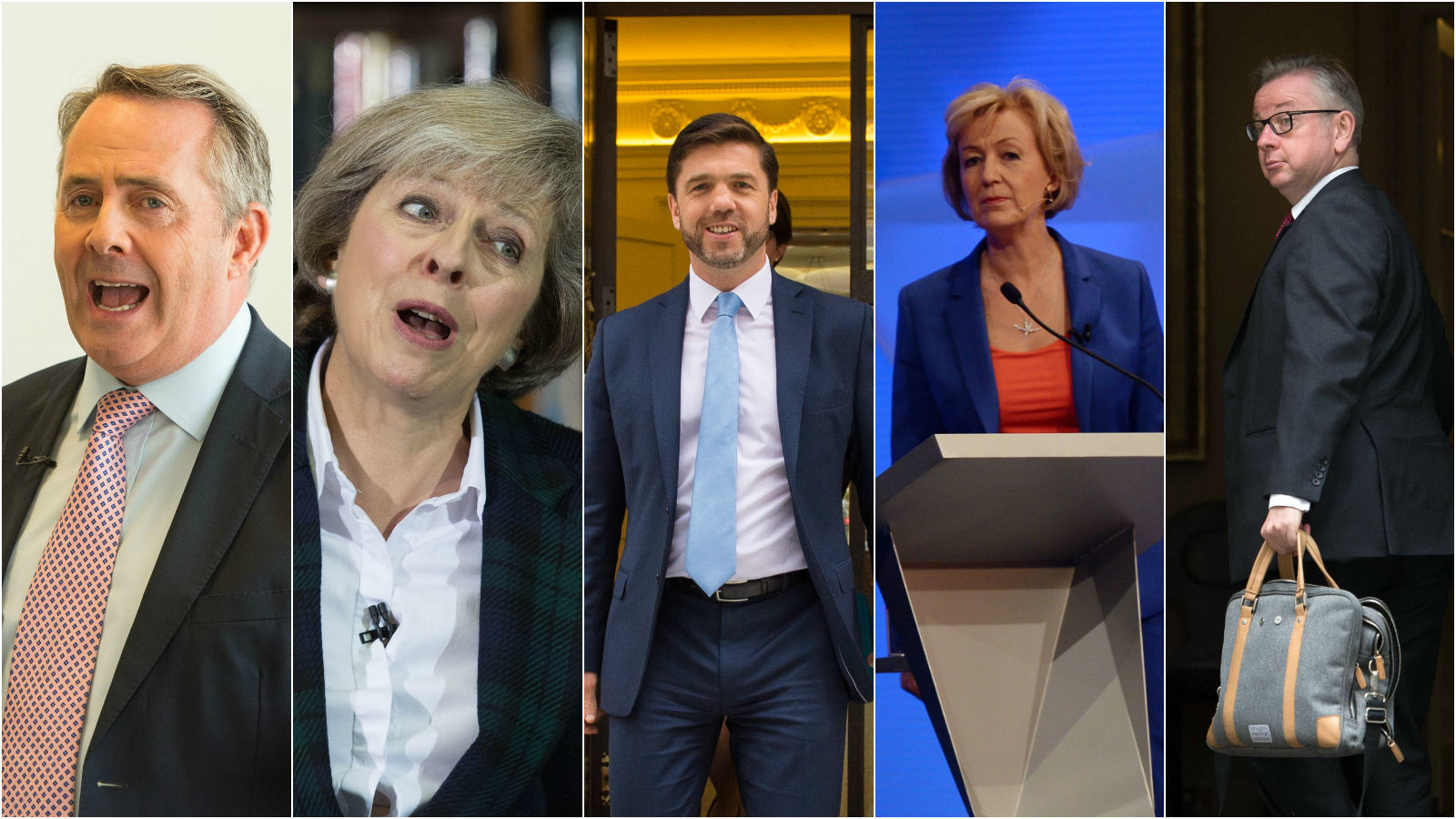
FIVE people have been confirmed as the official Tory leadership contenders by the chairman of the 1922 Committee, Graham Brady.
Now the deadline for nominations has closed, here’s a run down of the candidates and how one of them will become the next leader of the Conservative Party.
Who are they?
Theresa May
Voted: Remain

A quiet Remain backer who is seen as a steady hand to calm the party after its post-Brexit turbulence. The current Home Secretary’s campaign will be run by Chris Grayling. The Maidenhead MP is seen as the favourite to succeed David Cameron.
She said: “My pitch is very simple. I’m Theresa May and I think I’m the best person to be prime minister of this country.”
Michael Gove
Voted: Leave

The Justice Secretary, who sparked controversy when he was handling the education brief, was at Boris Johnson’s side for much of the Vote Leave campaign.
Gove appeared to be throwing his support behind Johnson’s leadership ambitions, before performing an incredible about-turn and running himself, saying he did not believe Johnson could “provide the leadership” the Tories needed. Only three hours after the Gove statement, Johnson quit the contest.
Stephen Crabb
Voted: Remain

The Work and Pensions Secretary is hugely popular in the Conservative parliamentary party and comes from the sort of ordinary background that chimes with many voters.
The former Welsh Secretary says the party should be led by someone “who understands the enormity of the situation we’re in and who has got a clear plan to deliver on the expectations of the 17 million people who voted to come out last week” including keeping the United Kingdom together.
Liam Fox
Voted: Leave

Dr Fox – who unsuccessfully sought the top job in 2005 – was the first to confirm he was considering a fresh bid. An outspoken supporter of Leave, he would hope to win over the right of the party.
The former defence secretary resigned from the front benches in 2011 after allowing his friend and best man Adam Werritty to take on an unofficial and undeclared role as his adviser.
Andrea Leadsom
Voted: Leave

An assured performance by the energy minister for the Brexit side in the referendum campaign won Leadsom praise.
The former banker and fund manager announced she was in the running, tweeting: “Let’s make the most of the Brexit opportunities.”
What about Boris?

Potentially the biggest surprise of all came when Boris Johnson – the widely presumed front-runner for the leadership race – announced that he would not be standing.
In a dramatic press conference at St Ermin’s Hotel in London, the face of the Leave campaign told reporters that the next Tory leader would have to unify his party and ensure that Britain stood tall in the world.
Then he said: “Having consulted colleagues and in view of the circumstances in Parliament, I have concluded that person cannot be me.”
How will David Cameron’s successor be chosen?
On July 5, MPs will begin to vote to whittle the five contenders down to two in consecutive rounds of voting on Tuesdays and Thursdays.
The MP with the least support is eliminated each time until only a final pair remain – in 2005, Kenneth Clarke was the first to go out, followed by Liam Fox (who is having another go this time), leaving Cameron to battle it out with David Davis.
The rivals will then go head-to-head with their pitch to party members at hustings scheduled around the country. In 2005, there were 11 of these events.

The membership chooses between the two in a one-member-one-vote postal ballot. This system was brought in under William Hague after the party’s crushing defeat in the 1997 landslide that brought Tony Blair’s Labour to power. Previously the leader had been chosen by MPs.
The party said it expected there to be around 150,000 eligible to vote this time – that is way down on the 253,698 eligible voters in 2005, which shows how party membership has slumped during Cameron’s tenure.
Then finally, on September 9, the winner will be announced. The timing – which was put back a week from the original proposal by the 1922 committee executive – will allow Cameron to attend the G20 summit in China as one of his last major engagements.
READ MORE
Boris Johnson announces he will not be standing for election as Conservatives leader
//

Enjoy the convenience of having The Sunday Post delivered as a digital ePaper straight to your smartphone, tablet or computer.
Subscribe for only £5.49 a month and enjoy all the benefits of the printed paper as a digital replica.
Subscribe